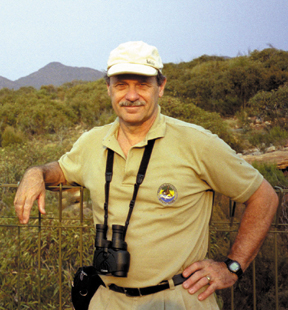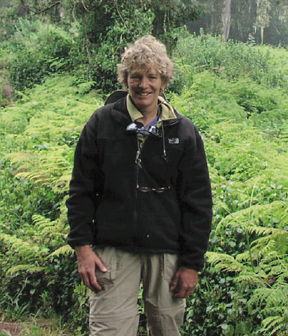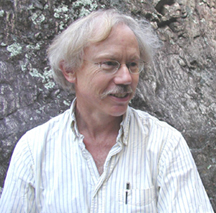 In
April, James Dieterich of the U.S. Geological Survey (USGS) joined the ranks
of a select group of USGS scientists who can count themselves among the members
of the National Academy of Sciences (NAS). Dieterich's election on April 29
followed shortly after the election to the NAS Council of fellow USGS scientist
Mary Lou Zoback, an NAS member since 1995. These two geophysicists, both from
the Earthquake Hazards team in Menlo Park, are the only currently employed USGS
scientists in the prestigious society of scholars in more than 15 years.
In
April, James Dieterich of the U.S. Geological Survey (USGS) joined the ranks
of a select group of USGS scientists who can count themselves among the members
of the National Academy of Sciences (NAS). Dieterich's election on April 29
followed shortly after the election to the NAS Council of fellow USGS scientist
Mary Lou Zoback, an NAS member since 1995. These two geophysicists, both from
the Earthquake Hazards team in Menlo Park, are the only currently employed USGS
scientists in the prestigious society of scholars in more than 15 years. Candidates for NAS membership are submitted without their knowledge and elected based on their scientific abilities. Dieterich learned of his new membership with a 6 a.m. telephone call. "It was a nice surprise," he says.

 "In Mary Lou's
case this involved the state of stress in the Earth's crust and the sources
of that stress, leading to the famous World Stress Map Project of the International
Lithosphere Program back in the late 1980s and early 1990s. She became one of
the NAS's youngest member on the basis of that work," Blanpied says.
"In Mary Lou's
case this involved the state of stress in the Earth's crust and the sources
of that stress, leading to the famous World Stress Map Project of the International
Lithosphere Program back in the late 1980s and early 1990s. She became one of
the NAS's youngest member on the basis of that work," Blanpied says. University
of Berkeley geomorphologist Bill Dietrich was also one of the 72 new members
elected to join NAS on April 29. He says his last name is the correct
spelling: "Mine is spelled the right way, like Marlene Dietrich,"
he says with a smile, contrasting his last name with that of fellow Bay
Area geoscientist inductee Jim Dieterich. Bill Dietrich and his research
group have contributed to development of quantitative expressions for
predicting the production and transport of soil and the erosion of river
valleys. They have used cosmogenic nuclide measurements and airborne laser
mapping to obtain new insights about landscape form and process. He has
contributed to problems ranging from floodplain formation rates in Papua
New Guinea, to controls on landslide occurrence in the Pacific Northwest.
University
of Berkeley geomorphologist Bill Dietrich was also one of the 72 new members
elected to join NAS on April 29. He says his last name is the correct
spelling: "Mine is spelled the right way, like Marlene Dietrich,"
he says with a smile, contrasting his last name with that of fellow Bay
Area geoscientist inductee Jim Dieterich. Bill Dietrich and his research
group have contributed to development of quantitative expressions for
predicting the production and transport of soil and the erosion of river
valleys. They have used cosmogenic nuclide measurements and airborne laser
mapping to obtain new insights about landscape form and process. He has
contributed to problems ranging from floodplain formation rates in Papua
New Guinea, to controls on landslide occurrence in the Pacific Northwest.
